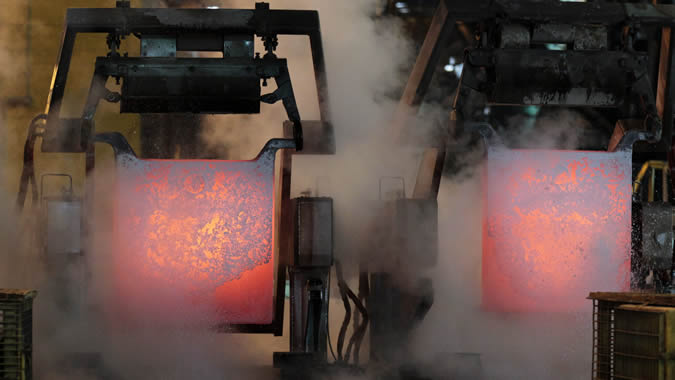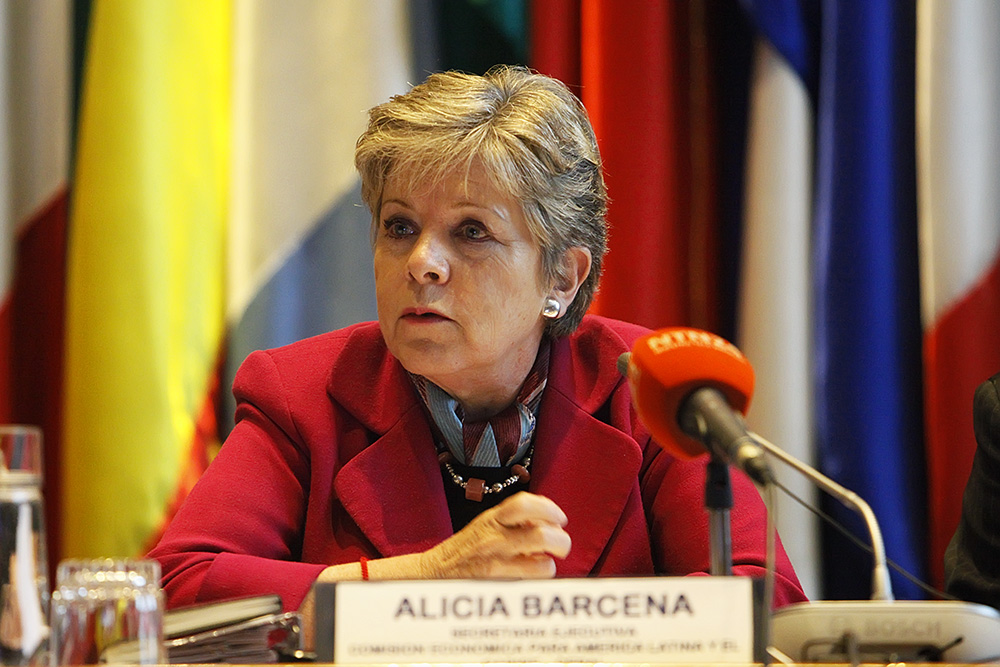Fostering Industrialization and Value Chains is Crucial for Taking Advantage of the Region’s Natural Resources
Work area(s)
In its latest annual report, ECLAC analyzes the evolution of investments in metal mining in Latin America and the Caribbean.

Demand for metal mining, led by China, had positive consequences for Latin America and the Caribbean in terms of exports and fiscal revenue in the last decade; however, the region did not make progress on a policy of industrialization: the linkages with other sectors are still weak and policies are lacking for mining to contribute to the creation of new capacities, ECLAC indicates in its latest annual report Foreign Direct Investment in Latin America and the Caribbean 2016.
According to the document, in the last 15 years the average relative weight of natural resources in the total flows of Foreign Direct Investment (FDI) in the region went from 16.6% and 17.1% in the 1990s and 2000s, respectively, to 22.3% in 2010-2014. In that four-year period, $170.555 billion dollars entered the region as FDI towards all sectors of natural resources.
“Our region, which could have taken better advantage of the natural resources boom, had not advanced on developing value chains by the end of this upsurge cycle,” said the Executive Secretary of the Economic Commission for Latin America and the Caribbean (ECLAC), Alicia Bárcena, during the report’s launch on Wednesday, June 15, in Santiago, Chile.
In parallel, China did not only drive international demand for minerals and concentrate imports, but also invested in the refining and smelting of metals, making headway on a mining-metallurgical value chain.
In the case of copper, for example, although China has much fewer reserves than Latin America, it implemented a strategy that aims for industrialization, importing the minerals at primary stages, processing them and later exporting them as base or finished metals, with the consequent adding of value in the local market, the report indicates.
Currently, the region possesses 66% of global reserves of lithium, 47% of copper, 45% of silver, 25% of tin, 23% of bauxite, 23% of nickel and 14% of iron.
However, the participation of China in the production of refined copper amounts to 34.8% of the global total versus 16% for Latin America and the Caribbean, the region that continues to lead copper production in mines.
“China has a medium and long term industrialization policy, a policy that seeks to give greater value added to commodities. Even when it does not produce them, it is adding value to the commodities that it has bought and accumulated. We have these primary materials, we don’t need to import them, we could have an industrial policy based on these major reserves of natural resources,” Bárcena stated.
This policy would contribute to the construction of a new development pattern in the region, which is central to achieving the goals contained in the 2030 Agenda for Sustainable Development, as explained in the document Horizons 2030: Equality at the Centre of Sustainable Development, recently published by ECLAC.
The FDI report affirms that countries in Latin America and the Caribbean should accompany the expansion of metal mining with policies that support the productive sector and obtain the greatest possible benefit from the point of view of inclusive and sustainable development.
It adds that while identifying the best strategies for mining to substantively support development is a complex challenge in which each country has to balance out diverse opposed interests, it is necessary to create an institutional space for coordination between the private and public sectors for designing and implementing industrial policies that take advantage of the mining sector to promote diversification.
Related content

Foreign Direct Investment Towards the Region Fell 9.1% in 2015 to Total $179.10 billion dollars
With proactive and integrated policies, countries can take advantage of FDI to diversify their economies, boost innovation and respond to the challenges of the 2030 Agenda for Sustainable Development…
Subregional headquarter(s) and office(s)
Type
Country(ies)
-
China
- Latin America and the Caribbean
Related link(s)
Contact
Public Information Unit
- prensa@cepal.org
- (56 2) 2210 2040
